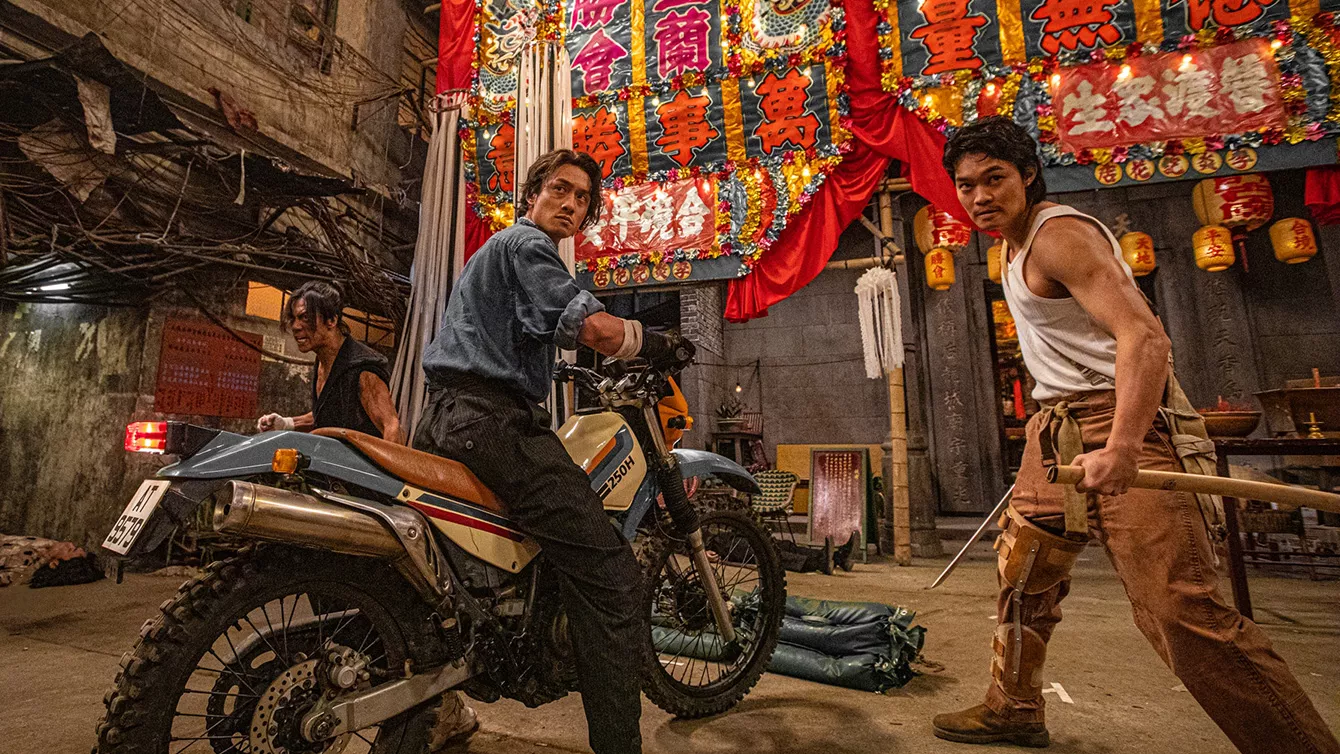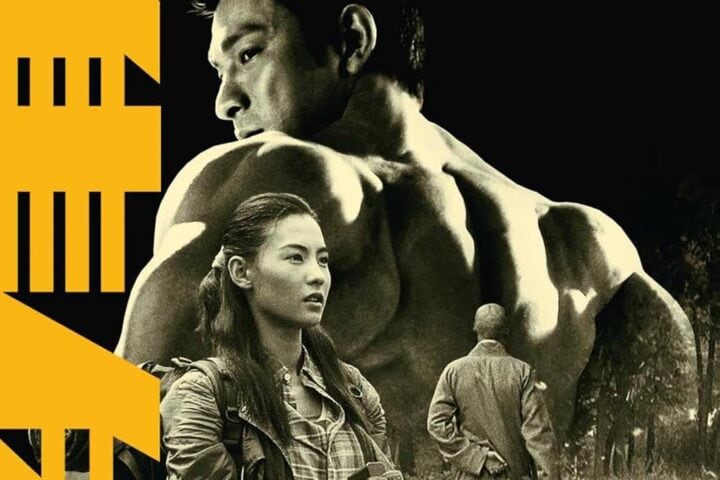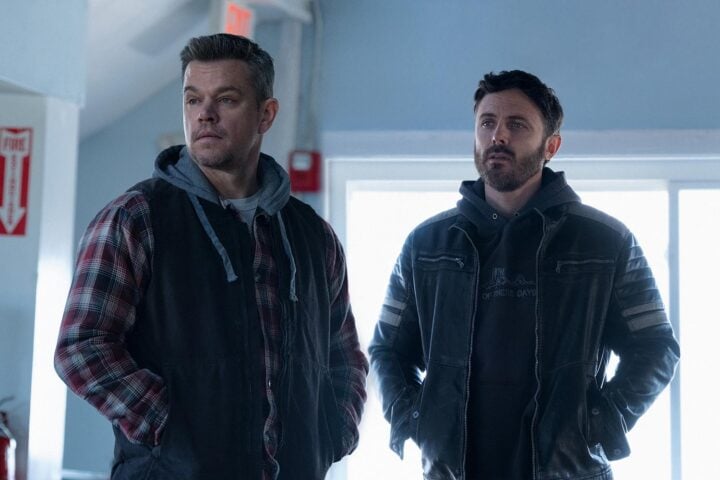About 40 minutes into Twilight of the Warriors: Walled In, Raymond Lam cracks a smile. Hardly a momentous development out of context, but for Lam’s protagonist, Chan Lok-Kwan—a refugee in Hong Kong’s notorious Kowloon Walled City who’s spent every preceding moment of the film desperately clawing for survival—it marks a point of no return.
Sharing a game of mahjong with three newfound allies, Chan forges the kind of emotional bond that represents both a lifeline and a liability in the unforgiving world of Walled In. It’s one of the many small moments of humanity that dot Soi Cheang’s action epic, and evidence of the director’s capacity for personal expression even at the largest of filmmaking scales.
Though it’s been in the making for over a decade now, there’s still something hard to believe about Soi’s ascent to the top of the Hong Kong film industry. The first half of his career established him as one of Hong Kong’s most talented and individualistic post-handover filmmakers, a period that culminated in two expert minimalist thrillers made for Johnnie To’s Milkyway Image production company: Accident and Motorway. The second has found him shifting between relatively anonymous work on the CGI-heavy, mainland-produced Monkey King blockbuster series and the kinds of unsparing genre exercises on which he made his name. The last two of those, the grisly contemporary-set horror-thrillers Limbo and Mad Fate, quickly assuaged any fans’ fears that Soi’s commercial ambitions had sanded off his edges.
Walled In, though, marks Soi’s true coronation to the industry’s throne. The early-’80s-set film has already become the second-highest-grossing domestically produced film in Hong Kong history, with two sequels to come. The walls of the title refer to Kowloon Walled City, a former military fort that became a densely populated, effectively lawless enclave in the wake of WWII. It was a frequent landing place for refugees like Chan, who escapes to the city after stealing drugs from triad boss Mr. Big (Sammo Hung), who rips him off in the film’s blistering opening. Chan soon ingratiates himself to Cyclone (Louis Koo), the head of the city’s de facto criminal government, and is inevitably drawn into the ongoing war between the two bosses.
Soi richly draws the city as both prison and refuge, where brutal exploitation sits alongside the residents’ deep sense of solidarity and cooperation. As in Limbo, his widescreen images seem expressly intended to fit as much infinitesimal detail in the production design as the human eye can take in. For those of us weary of contemporary trends in mise-en-scene, Soi’s bustling, lovingly crafted frames will be a breath of fresh air. The city’s labyrinthine geography becomes a central element of Walled In’s many chases and brawls, which find the characters barreling down corridors and through walls with a physicality absent from any stateside blockbuster in recent memory. Of particular note is the use of vertical space to connect the city’s various levels, worthy of Samuel Fuller’s Fixed Bayonets! in its truly three-dimensional action scenes.
Beyond its formal uses, space is one of the film’s key thematic motifs. Chan is just trying to carve out his own tiny corner of the frame—literally, in some shots of the character’s makeshift dwelling—and yet doing so proves a Herculean task. When one character asks Chan why he’s stirring up trouble in the Kowloon Walled City, Chan replies that he’s simply trying to make a little money. “That’s stirring up trouble,” comes the retort. Space becomes a business concern with the announcement of the Hong Kong Handover agreement, which sets in motion a plan to buy out or evict the residents of the city to prepare it for demolition. Mr. Big and his henchmen quickly seize on the opportunity, threatening the city’s people into selling them their homes for peanuts in the hopes of flipping them to the government for massive profits.
This conflict, along with the excavation of some unpleasant personal history between Chan and the bosses, makes up the bulk of Walled In’s busy plot. The questions of loyalty, brotherhood, and betrayal it brings up between Chan and his cadre go to the core of martial-arts cinema, and it’s hard not to draw some parallels between the bygone golden age of Hong Kong movies (generally accepted as lasting from the early ’80s to the mid-’90s) and the impending destruction of the Kowloon Walled City and the communities it houses.
Sammo Hung, the elder statesman of the star-studded cast, is around to conjure memories of the period as well. Throughout Walled In, the filmmakers never sugarcoat life in the Kowloon Walled City—Chan’s friendly game of mahjong comes after he and the other three players mercilessly beat a man as revenge for murdering a sex worker—but the film suggests that the bonds that life forges are still preferable to whatever financialized nightmare will come next.
Despite Soi’s best efforts, the commercial demands of Walled In do take their toll on the film’s impact. It never quite reaches the expressive extremes of Soi’s 2015 action melodrama Kill Zone 2, either in its choreography or emotional textures. Neither does it feel as uncompromising as Limbo’s apocalyptic gruesomeness, landing somewhere in a middle ground between the two.
As convincing as Soi makes some of the shortcuts of character and narrative, shortcuts they remain, and the otherwise thrilling denouement loses some power with the head-scratching introduction of a supernatural element to the proceedings. Still, there are few filmmakers who would be better entrusted with an action franchise of this scale, and Walled In satisfies on its own while posing the tantalizing question of how Soi plans to top it with the next two entries.
Since 2001, we've brought you uncompromising, candid takes on the world of film, music, television, video games, theater, and more. Independently owned and operated publications like Slant have been hit hard in recent years, but we’re committed to keeping our content free and accessible—meaning no paywalls or fees.
If you like what we do, please consider subscribing to our Patreon or making a donation.




